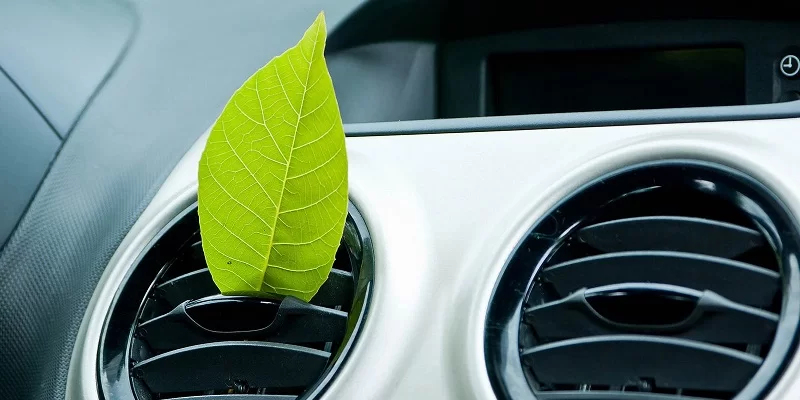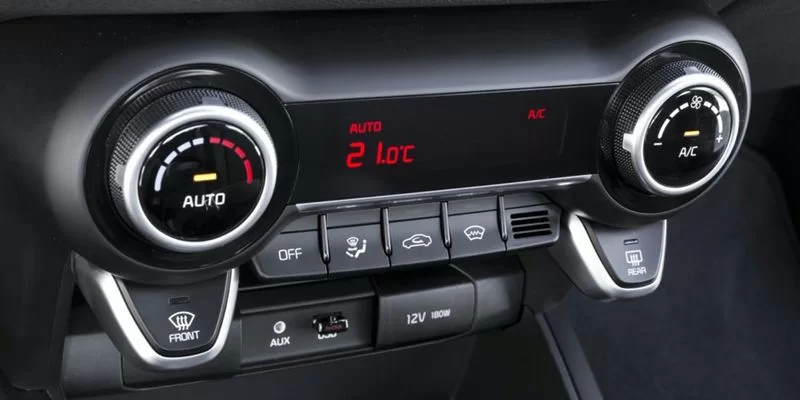
Compare climate control and air conditioning | Determine the best option
Not every driver understands correctly what is the main difference between an air conditioner and a climate control system in a car, since outwardly they are almost identical. But their «stuffing» is completely different. Hence — a different effect on the operation of devices. One simply cools, the second independently controls the temperature regime. Our experts know exactly what is better — air conditioning or climate control and will tell you about it further.
Features of car air conditioner

An air conditioner built into a car is a simple and fairly effective device designed to cool the air in a car. This is a great solution for hot weather. But it’s quite difficult to call it convenient to use, since for its high-quality work it will be necessary to constantly change the settings on the control unit.
The temperature regulators and the direction of the air flows are connected with the help of cables to specific dampers in the air conditioning unit. By the way, on inexpensive car models, such an air circulation damper drive is still found. In some cases, a vacuum-type drive is used, however, it is also manual.
Car air conditioners also have electronic adjustment, which involves controlling the operating speed of the fan and activating the compressor. True, the control over the performance of the system is carried out, again, manually.
If a special thermal sensor is installed behind the «board» of the car, the device will not turn on when the temperature drops to a certain level. When the element starts to work, its intensity depends primarily on the fan speed: the higher it is, the more the air in the car will be cooled. Not the most pleasant feature of a conventional car air conditioner is the drying of air before it enters the passenger compartment (regardless of whether we are talking about heating or cooling).
ON A NOTE. If the car air conditioner suddenly stopped producing enough cool air, this does not mean that it is time to rush to a specialized service. Usually it’s all about the cabin filter, which simply clogged and stopped letting enough air through. You just need to replace it and the problem will be solved.
Features of the device and the purpose of climate control

Climate control can be compared to a conventional car air conditioner as a more complex automatic system (the latter can be represented as a carburetor, and the former as an injector). Unlike a conventional cooling device, climate control is able to automatically maintain the optimal air temperature in the car interior.
Climate control is represented by several working elements:
-
air conditioner;
-
heating system;
-
sensors;
-
filters;
-
electrical control box.
By the way, advanced options built into expensive car models regulate the air temperature in the cabin, even taking into account the degree of its illumination by the rays of the sun. Thus, the most comfortable mode is created. By the way, if the outside temperature is negative, the climate control will ensure not only the optimal operation of the heating, but also connect the air conditioner to work to prevent fogging of the car windows.
Speaking about the features of the climate control device, one cannot fail to mention the electronic system: all dampers are equipped with electric drives regulated by the control unit. Thanks to special sensors, not only a certain temperature regime is controlled, but also a given humidity (not only inside the cabin, but also outside). Climate control in some car models is even able to regulate the level of solar radiation, but it is difficult to call such an option useful.
It is the electronic control unit, by the way, that is the main feature of climate control, since it gives him the opportunity to perform all the work for the driver related to setting the appropriate temperature in the car. Thanks to a variety of sensors, the system quickly analyzes data on temperature, humidity levels (inside and outside), adjusting the performance of the air conditioner, fan speed, etc. If desired, the driver can turn off the automation and control manually. But this will not happen with a conventional air conditioner: there is only one option — to operate the switches manually.
To optimize the operation of climate control, it is necessary to regularly monitor the condition of the radiator: clean it from dust and accumulating bacteria. To do this, you can use a special composition (the so-called «smoke bomb»), usually used to clean the ventilation system.
Comparative characteristics

Traditionally, we sum up, evaluating in detail both considered devices in comparison with each other. What’s better? We look.
|
|
|
|
|
|
Automatic processing of data on the temperature in the cabin and outside, the speed of the car, its illumination by sunlight, etc. Creation of the optimal temperature regime based on the received data
|
Supply of pre-cooled or heated air to the passenger compartment after turning on the device manually
|
|
|
The device works on several cabin zones at once (for the driver, passengers sitting in the back, etc.) with the possibility of individual temperature control
|
The device provides a flow of cold or hot air only to the front of the cabin
|
|
|
A number of special sensors, air conditioning, heater, filter and control unit (electronic)
|
Built-in fan, mechanical control unit
|
|
|
Built-in automatic control unit (on the center console)
|
The control panel has special mechanical type switches.
|
Добавить комментарий
Для отправки комментария вам необходимо авторизоваться.